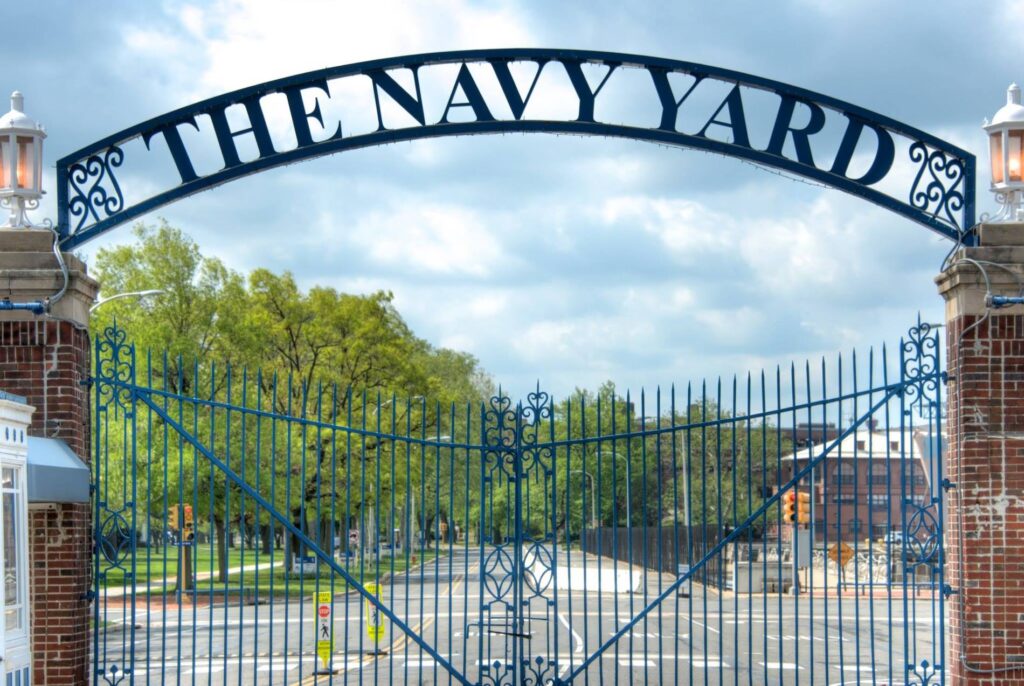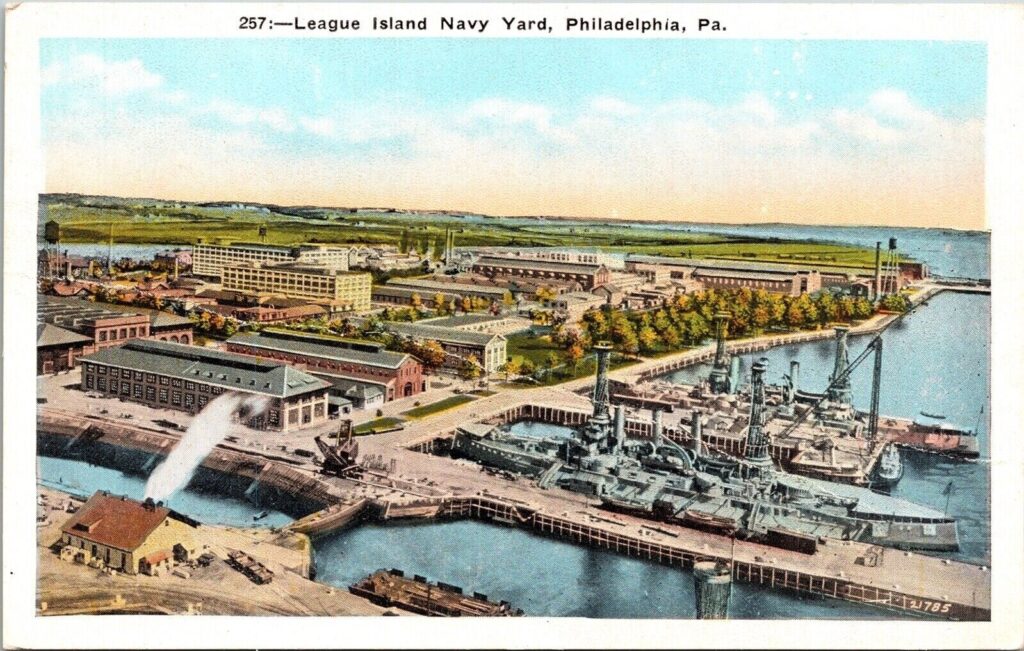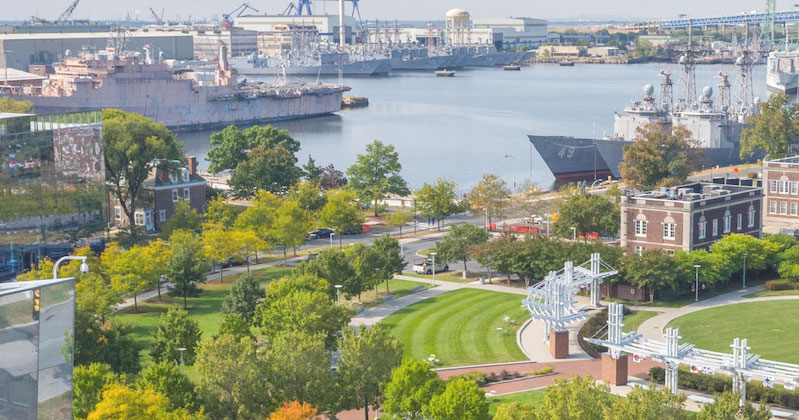The Navy Yard in Philadelphia
The Dawn of the U.S. Navy (1776 – 1801)
Philadelphia holds the honor of being the birthplace of not only American democracy but also the U.S. Navy. The city’s historical significance is well-known, with millions visiting each year to explore its rich past. Amid this illustrious history, Philadelphia also stands as the cradle of the U.S. Navy.
In 1776, during the early stirrings of the American Revolution, the Continental Congress leased land along Philadelphia’s Front Street docks to support naval defense. This marked the beginning of the city’s naval legacy. President George Washington, recognizing the need for a strong naval force, signed the Naval Act in 1794. This act mandated the purchase of six frigates, marking the official birth of the United States Navy.

The first of these commissioned ships, the wooden-hulled Franklin, was constructed in a shipyard below Carpenter Street in Philadelphia’s Southwark neighborhood. This shipyard, after its purchase by the U.S. Navy in 1801, became an official part of the United States Navy and was known as the Southwark Yard.
Transition from Southwark to League Island (1801 – 1876)
For much of the 19th century, the Southwark Yard remained a vital production center for the U.S. Navy. It served the nation throughout the War of 1812 and the Civil War, constructing numerous naval vessels. However, the introduction of ironclad warships and the increasing obsolescence of the Southwark Yard led to the need for a new, modern facility.
In 1868, Philadelphia transferred the 923-acre League Island to the U.S. Government. After several years of slow progress due to the aftermath of the Civil War, the first buildings of the new Philadelphia Naval Shipyard (PNSY) began to rise on League Island in the 1870s. The Southwark Yard closed in 1876, marking the end of an era and the beginning of a new chapter for Philadelphia’s naval legacy.
A Century of Naval Excellence (1876 – 1996)
The newly established PNSY served as a naval base for 120 years. During World War II, the shipyard reached its peak, employing over 40,000 people. Workers constructed 53 warships and repaired an additional 1,218, making crucial contributions to the war effort.
The last new ship to be built at the yard was the Blue Ridge, completed in 1970. Despite rumors of closure over the ensuing decades, the shipyard continued operations until 1996, when the Base Realignment and Closure Commission (BRAC) made the decision to cease activities.

Reinvention and Revival (1996 – Present)
The closure of the PNSY in 1996 marked a significant shift in the yard’s history. However, the end of its naval operations was not the end of its story. In 2000, the Philadelphia Industrial Development Corporation (PIDC) acquired control of the Navy Yard on behalf of the City of Philadelphia and the Philadelphia Authority for Industrial Development (PAID).
Through extensive redevelopment, the Navy Yard has transformed into a thriving, 1,200-acre business community. It is now home to more than 150 companies, occupying over 7.5 million square feet of office, industrial, and research and development space.
The U.S. Navy’s Naval Ship Systems Engineering Station (NAVSSES), the Propeller Shop and Foundry, and the Naval Inactive Ship Maintenance Facility (NISMF) continue to operate at the Navy Yard, maintaining its naval roots while embracing its new identity as a bustling commercial district.
The Navy Yard Today
Today, the Navy Yard is a vibrant community of businesses and individuals. Over 15,000 people work at the Navy Yard, employed by more than 150 companies. The area has become a magnet for new businesses and investment, standing as a testament to the power of redevelopment and reinvention.
The Navy Yard offers a unique blend of history and innovation. Its transformation from a naval shipyard to a dynamic business hub makes it a model of successful commercial redevelopment. With its rich past and promising future, the Navy Yard is a vital part of Philadelphia’s identity, embodying the city’s spirit of resilience and innovation.
